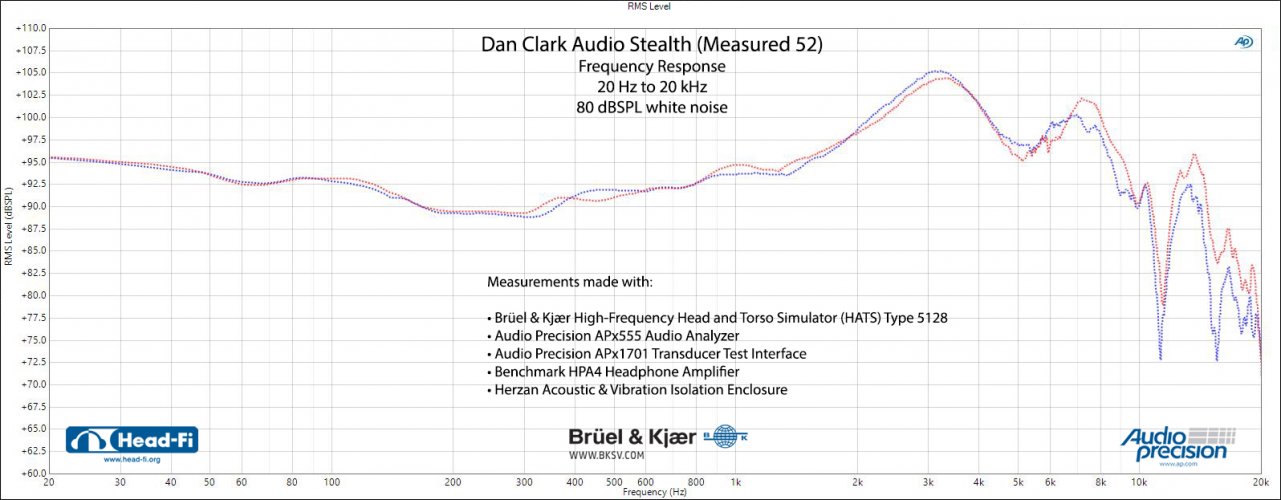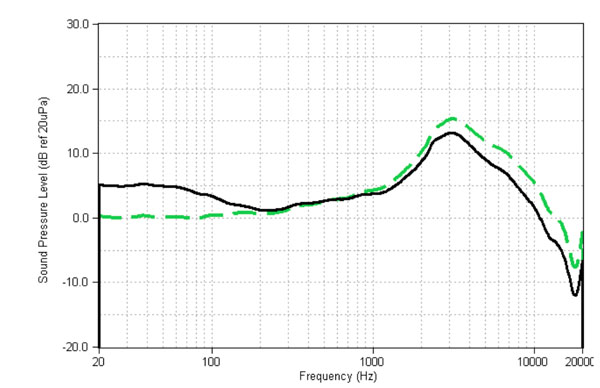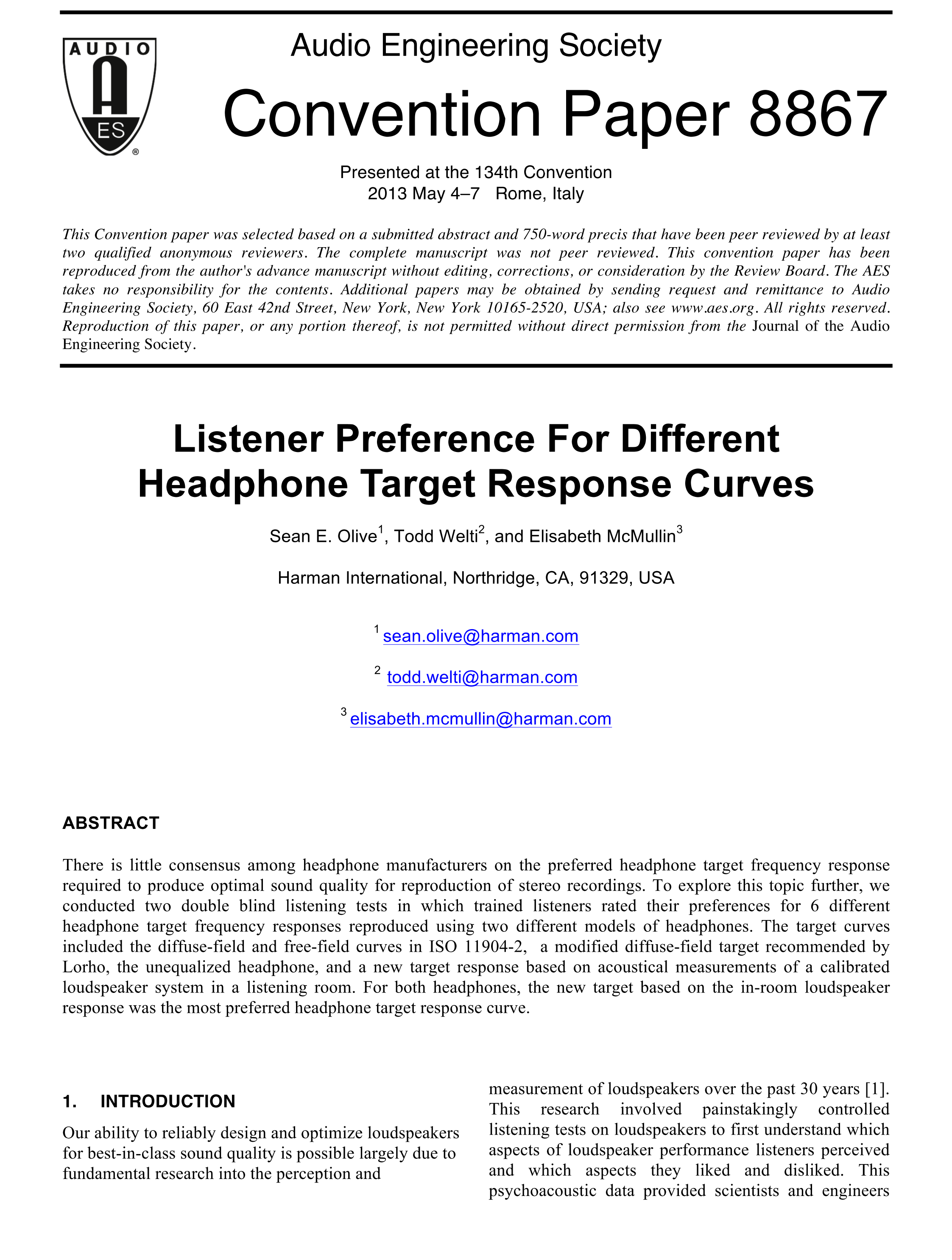I just finished listening to Resolve's latest live stream, and thought there were a couple interesting topics that came up which sort of tied into some of the discussions in this forum, that might be worth commenting or expanding on. So thought I'd post a few thoughts on it here.
One contributor to the live feed, for example, asked for an explanation of the diffuse field. And Resolve really only scratched the surface a bit on that. I think maybe the easiest way to grasp the concepts of a diffuse and free field is to think of them as being sort of opposite ends of a continuum.
In a free field, the sound is only coming at the listener from a single angle or direction. And the "free" part simply implies that it's free or absent of any reflections. A diffuse field is sort of the opposite of this, where the sound is coming at the listener at equal levels from all directions and angles.
https://en.wikipedia.org/wiki/Free_field_(acoustics)
https://en.wikipedia.org/wiki/Diffuse_field_acoustic_testing#Diffuse_field_principle
It's really not much more complicated than that. And since the sound fields that usually surround us are typically a much more complex mixture of free/direct, diffuse and reflected sounds, both the free and diffuse fields are really more abstractions of the sort of thing we typically encounter in normal circumstances. Because it is rare for us to be in a space which is either completely reflective, or completely non-reflective.
That does not mean they are totally useless though. Far from it in fact. Because when these types of sound fields are measured at the eardrum of a dummy head, for example, they can provide alot of useful info about how the shapes of the ear, head and torso interact with and distort free or diffuse sounds at different frequencies, before they reach our nervous system and brain. Another term for this type of interaction is a transfer function.
Since the diffuse and free field are abstractions though, which rarely occur in daily life, they don't provide all the info we need to understand how a source with a non-uniform sound signature or dispersion at different frequencies might potentially behave in a semi-reflective room. Why is that important?... Because that's how we normally hear sounds from a set of loudspeakers in a room. And a complex sound field of this type will have a different response at the eardrum than either a free or diffuse field. So we have to look in a couple other places to fill in some of the information gaps on this kind of thing...
The first and easiest method is simply to measure the actual sound of loudspeakers in a room at the eardrum. Another method is to make an educated guess at the sound, based on listeners' subjective preferences. And a third method is to combine a loudspeaker's room curve with the measurement of a loudspeaker at the ear that has had all of the room effects nullified. These are all methods that Harman has explored in their development of the Harman target.
It will probably come as no great shock though that I'm going to propose a fourth method, which I think could be just as potentially good or accurate as most of the others above. And maybe also a bit easier to calculate. And that is to combine the diffuse field curve at the ear with a speaker's sound power curve.
https://en.wikipedia.org/wiki/Sound_power
Imo, the sound power of a loudspeaker, and the diffuse field response at the ear are like two different sides of the same coin. One is simply measured from the perspective of the sound source (ie speaker in a room), while the other is measured from the perspective of the sound receptor (ie the eardrum).
Recall that the diffuse field is a measurement of the in-ear response to sound coming equally from all directions. At all frequencies. And what gives a diffuse field curve its shape or spectral characteristics are the head, torso, and ear interference, both constructive and destructive, with that sound at various frequencies before it reaches the eardrum.
When it comes to the in-ear sound of a loudspeaker in a room, there are really only a couple quantities which are missing from this diffuse field equation, and those are primarily the effects of the loudspeaker's dispersion at different frequencies, and the effects of the semi-reflective room on those frequencies at the listening position, before reaching the torso, head and ear. And we seem to get both of those things (or something awfully damn close to it) from the speaker's sound power measurement.
If we were actually measuring the sound of a speaker in a room, at the eardrum, then there are some other characteristics which could also come into play, such as the speaker's direct sound, and early reflected sounds. Which are accounted for in a speaker's room curve calculation. Since we are only looking at the ear's response to diffuse sound though in this last method, we need only to look at the speaker's correlate for this to derive its in-ear characteristics. Which is its sound power.
That is my theory anyway. And I think there is quite a bit of both subjective and also objective evidence to potentially back it up.
Last edited:



























